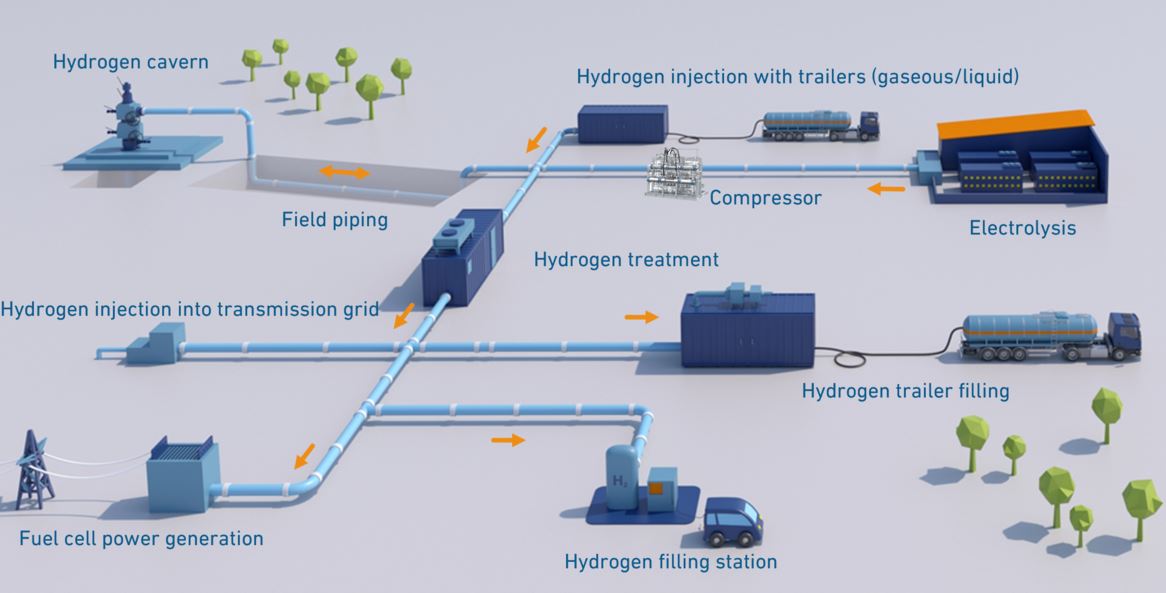Germany – Uniper has entrusted Bilfinger with the engineering, procurement, and construction management (EPCm) services for an innovative hydrogen storage project.
This venture, situated in the Krummhörn cavern storage facility in Lower Saxony, Northern Germany, is poised to play a pivotal role in the quest for large-scale green hydrogen storage solutions.
Uniper’s plan involves constructing a hydrogen storage facility with a capacity of up to 3,000 m3 in a pilot cavern within the former Krummhörn natural gas storage facility. The primary goal is to operate this facility under real conditions to develop a robust commercial storage solution for green hydrogen on a grand scale. Bilfinger’s proprietary hydrogen processing technology, “H2DRY,” will be at the core of this innovative storage approach.
H2DRY
The H2DRY system, developed by Bilfinger, is central to the success of this pioneering project. The technology utilizes a unique scrubbing liquid to efficiently remove water from hydrogen through absorption. This is crucial as moist hydrogen can lead to corrosion on pipes and valves. Bilfinger’s extensive experience in gas storage positions the H2DRY system as an economical and efficient solution for large-scale hydrogen treatment.
The existing storage facilities in Krummhörn, initially designed for natural gas, will undergo significant transformations for hydrogen use pending new public and legal approvals. Bilfinger’s Engineering & Maintenance unit will spearhead the engineering, procurement, and construction management services for the conversion. This includes planning and commissioning pipeline systems required for hydrogen transportation between the existing natural gas field pipeline and the storage station.
Testing
As Bilfinger coordinates the delivery and installation of the H2DRY system and hydrogen drying technology, the Krummhörn pilot cavern marks the second location testing Bilfinger’s innovative system. The first application is at the Rüdersdorf gas storage site near Berlin, showcasing the potential for storing hydrogen in underground caverns.
Photo: Uniper





